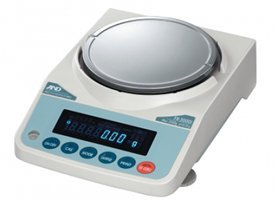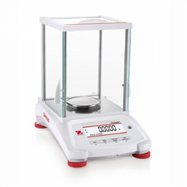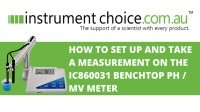What is a Precision Balance?

Join us to learn what is meant by the term “precision balance”, the unique qualities of this type of instrument, and how different products suit specific applications.
Definition: What is a Precision Balance?
A precision balance (sometimes called a top-loading balance) is a highly accurate device used to weigh an item's mass (usually) within a milligram. Precision balances are available in a wide range of capacities, from several hundred grams up to kilograms.
What are the Differences Between Different Types of Balances?
Outlining the similarities and differences between types of balances is a good way to clarify and better understand a precision balance. Generally, precision balances are not as accurate or precise as analytical balances but more sensitive than compact or bench scales. Also, precision balances tend to have a higher capacity than analytical balances but lower readability. For more information on Digital Balance terms see our article “Digital Balances: How to Read Specifications”.
For even greater clarity, please see the table below that compares precision balances with analytical balances.
|
|
Analytical Balances |
Precision Balances |
|
Designed for: |
Measuring small mass at great accuracy and precision. |
Same as Analytical Balances but cheaper, less accurate and precise, but with greater capacity and durability. |
|
Pricing: |
More costly. |
Less costly. |
|
Typical application(s): |
Quantitative chemical analysis - chemistry and pharmaceutical applications.
|
Similar to Analytical Balances but for applications in less protected environments requiring less accuracy and precision (see below for more detail). |
|
Measurement capacity and pan size |
Less than a few kilograms, pan size generally small. |
150g up to over 10 kilograms. Pan sizes vary from as small as analytical balances to extra large to accommodate high capacities. |
|
Readability: |
Very high (0.1mg - 0.01mg). |
Typically, 0.1g, 0.01g or 1mg. Normally, lower than Analytical Balances. |
|
Accuracy: |
Extreme – Analytical balances generally have the highest accuracy level of all digital balances. |
Less Accurate – Although still highly accurate compared to everyday scales, digital precision balances are less precise than analytical ones as they do not measure low mass objects. |
|
Repeatability (i.e., Precision): |
Extreme. |
High but lower repeatability compared with Analytical Balances. Not used to measure low mass objects.
|
|
Operating environment requirements: |
Affected by air currents. A avoid drafts or use a draft shield and create a dedicated space to prevent environmental interference.
|
More robust - measurements are generally unaffected by environmental interference.
|
|
Calibration requirements: |
Monitor regularly, perform frequent calibrations. |
Calibrate less often compared to Analytical Balances. |
|
Variety of designs: |
Restricted. |
Many capacity options, more body styles and options. |
Typical Applications for Precision Balances
Precision balances have many uses across various industries and applications. Examples include:
- Laboratory and chemistry applications
- Medical and pharmaceutical
- Research and education
- Production; and
- Specialised industrial tasks.
Examples of Precision Balances

3200 g x 0.01 g Fxi Precision Balance
|

Pioneer Precision Balance with Internal Calibration
|

PS 6000.R2.H Precision Balance (6000 g x 0.01)
|

EXPLORER Precision Balance, 10200g x 0.01g
|
Conclusion
Precision balances are designed for measuring mass in laboratory, medical and industrial settings. There are a wide variety of precision balances available that cater to diverse applications in differing environments. While precision balances offer a good degree of accuracy and precision (not to mention more accessible price points), an analytical balance may be a better choice if you need extreme accuracy.
Browse all precision balances here.
For information about precision balances or advice about the best balance for your application, speak with an Instrument Choice Scientist today! Call 1300 737 871 or email [email protected].
Also interesting
The Instrument Choice team of scientists regularly reviews new and popular products, so you can make more informed decisions when searching for the perfect scientific instrument for your application.
This edition reviews the Casella CEL-240, a general-purpose sound level meter overflowing with convenient features for undertaking noise level measurements in a range of applications.
Get our scientists’ review of the Digital Sound Level Meter Casella CEL-240

The IC860031 Benchtop Digital pH / MV Meter is a professional, practical, and affordable digital benchtop pH and mV meter brimming with useful features and functions that make it ideal for laboratory use.
Get your IC860031 Benchtop Digital pH / MV Meter setup guide here

